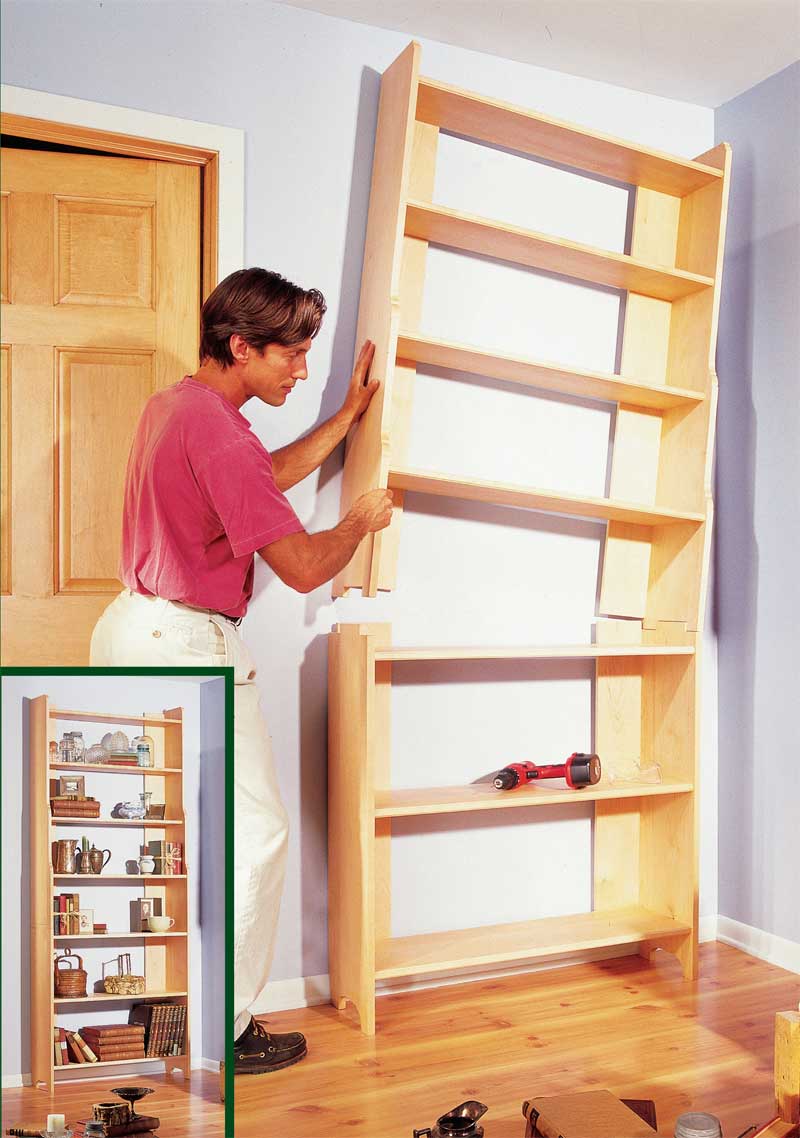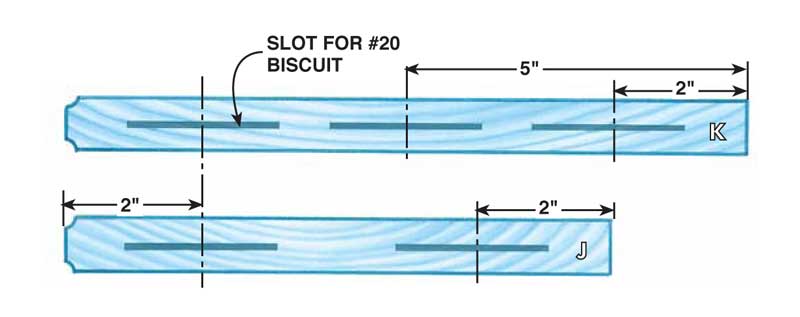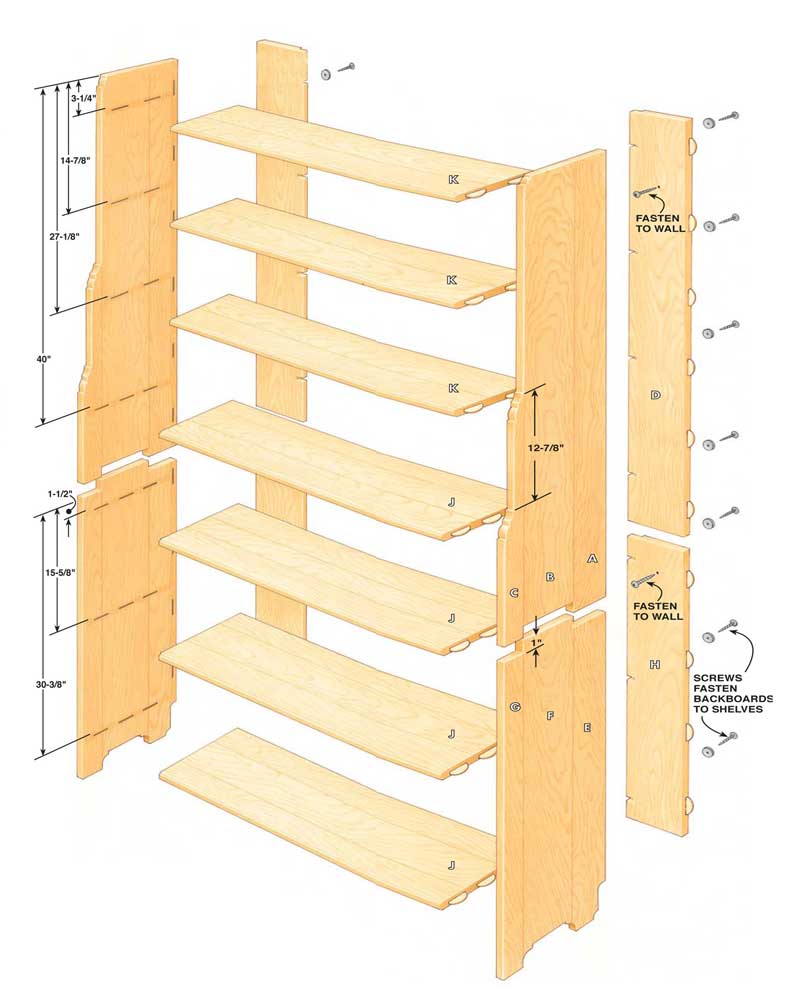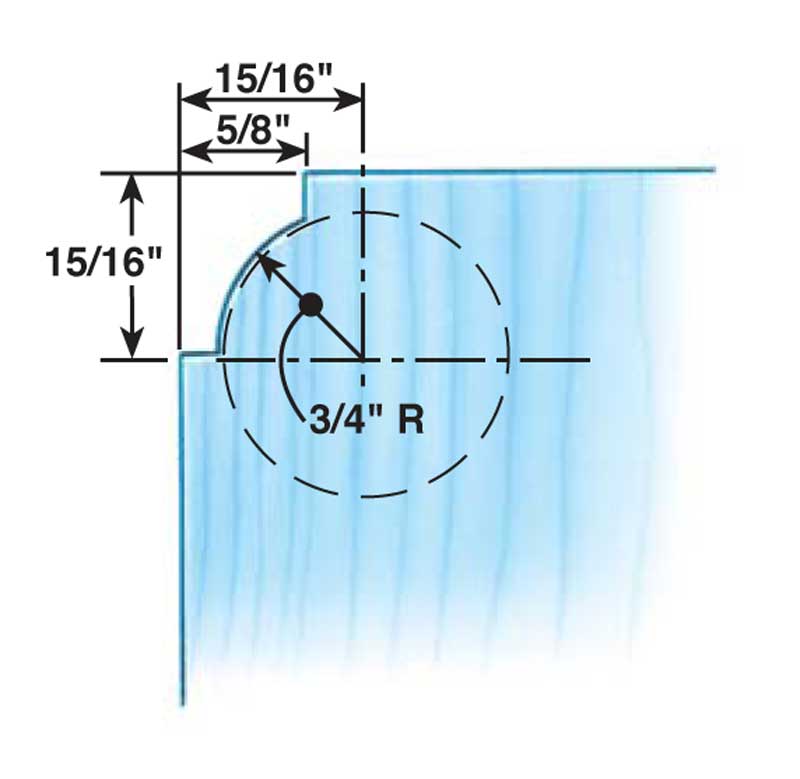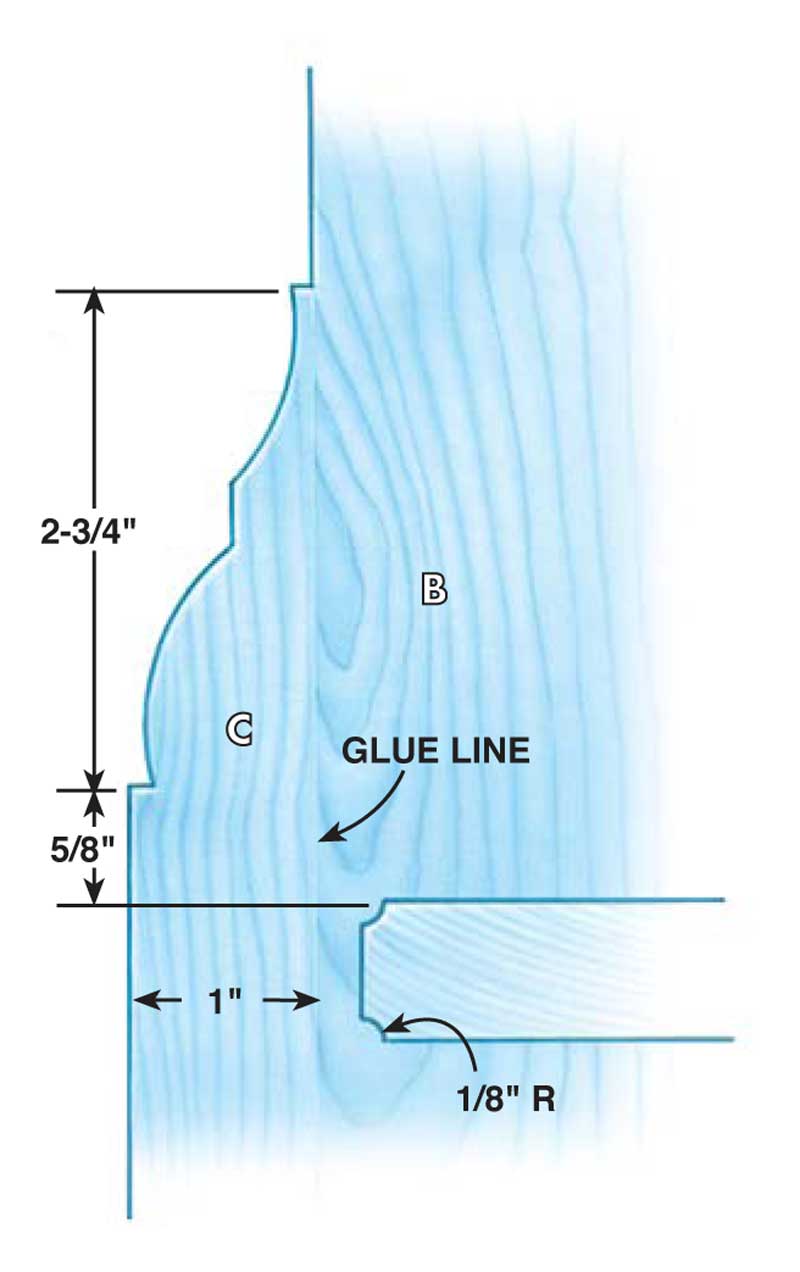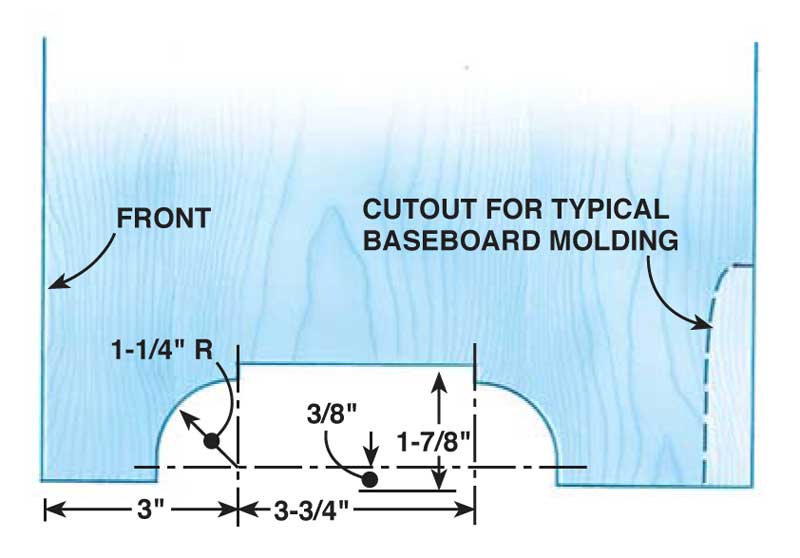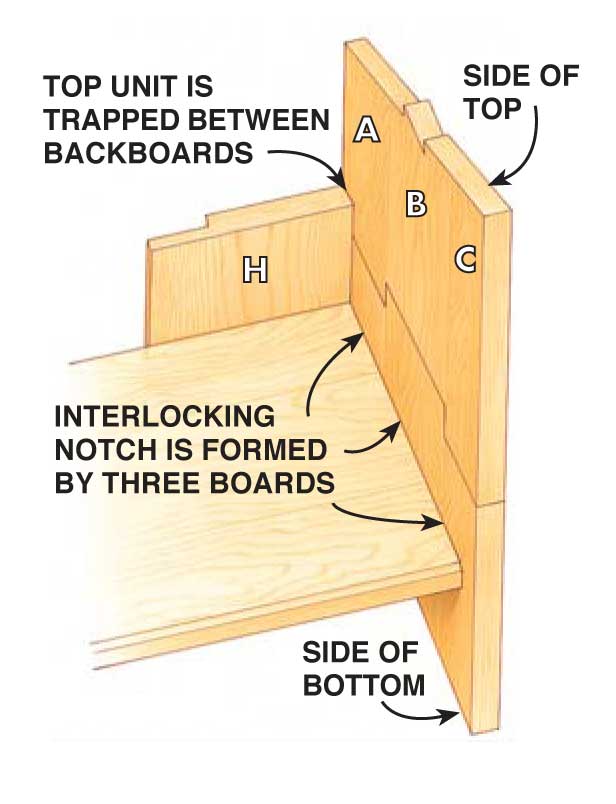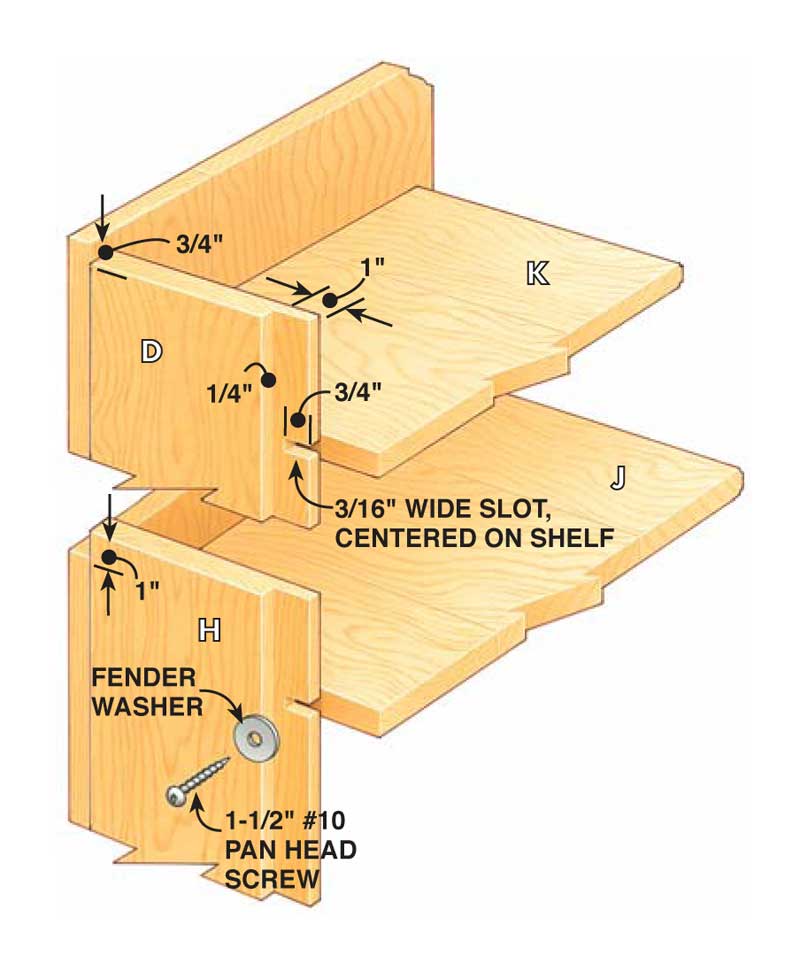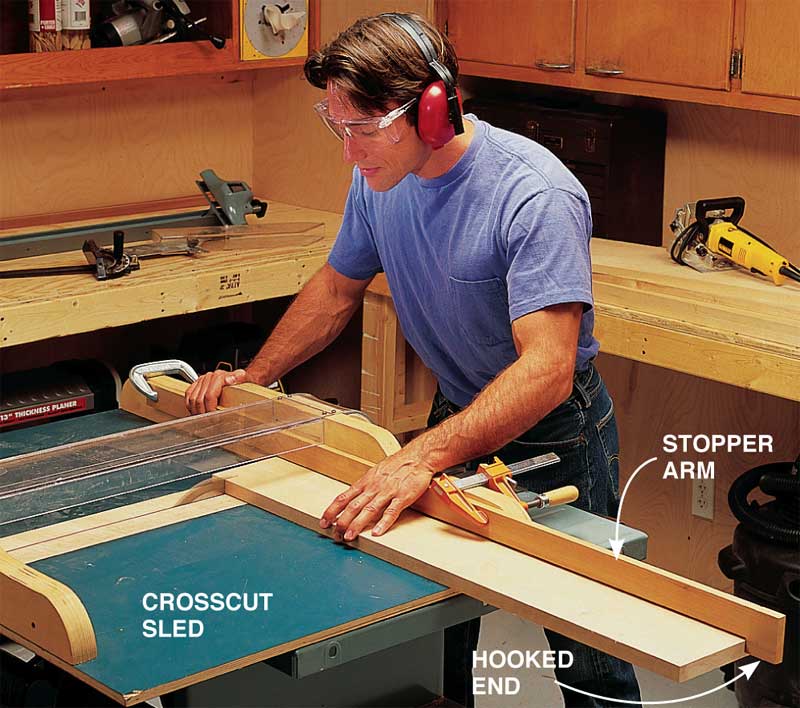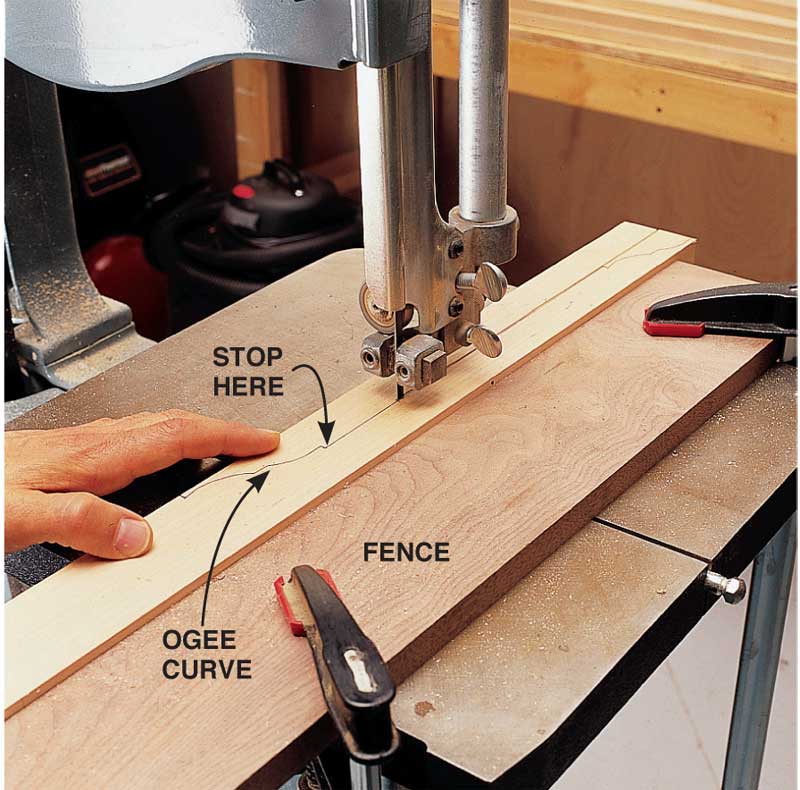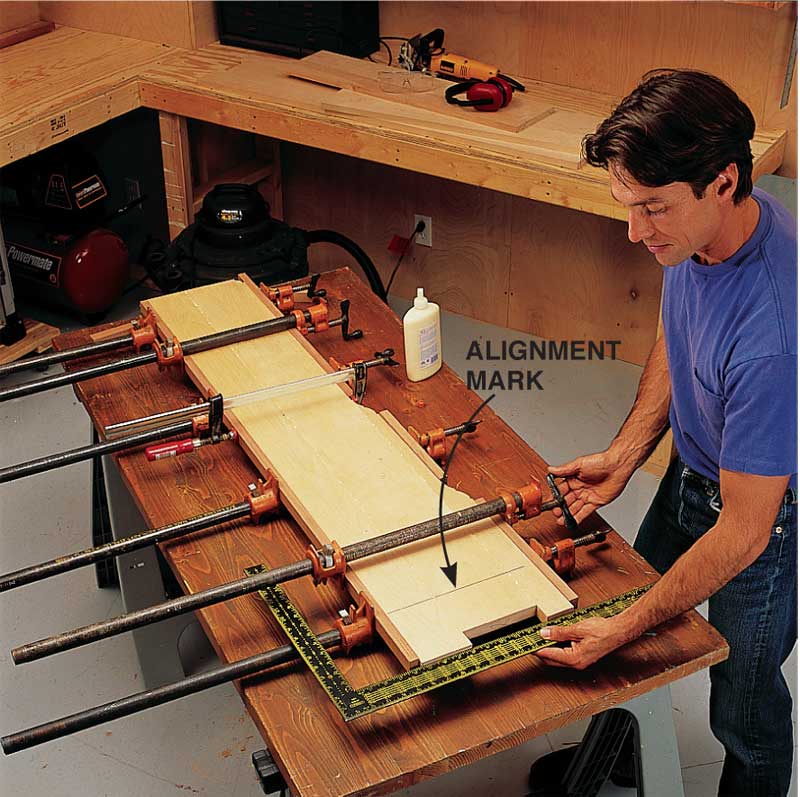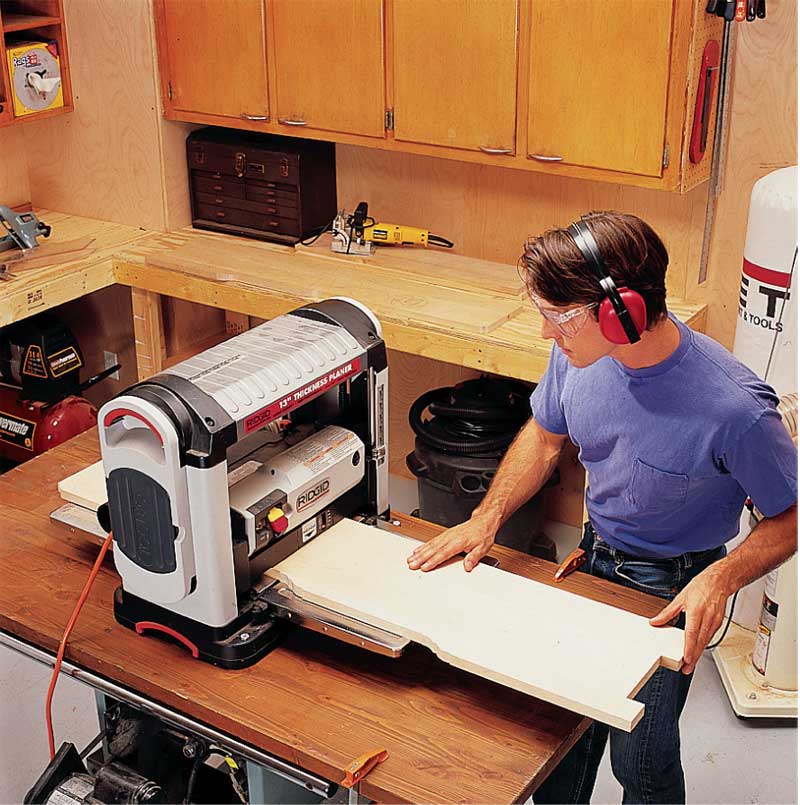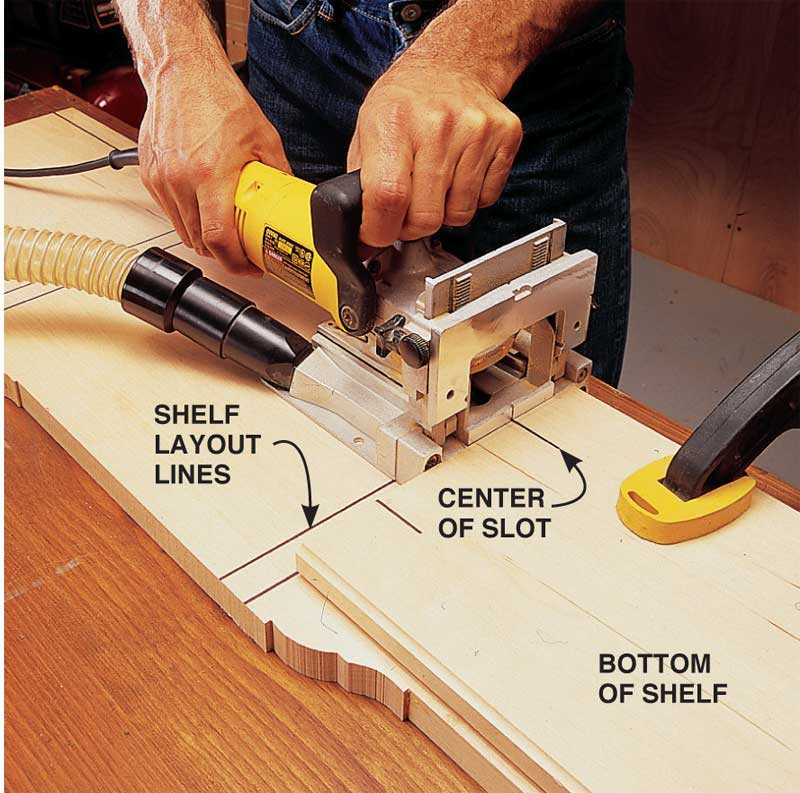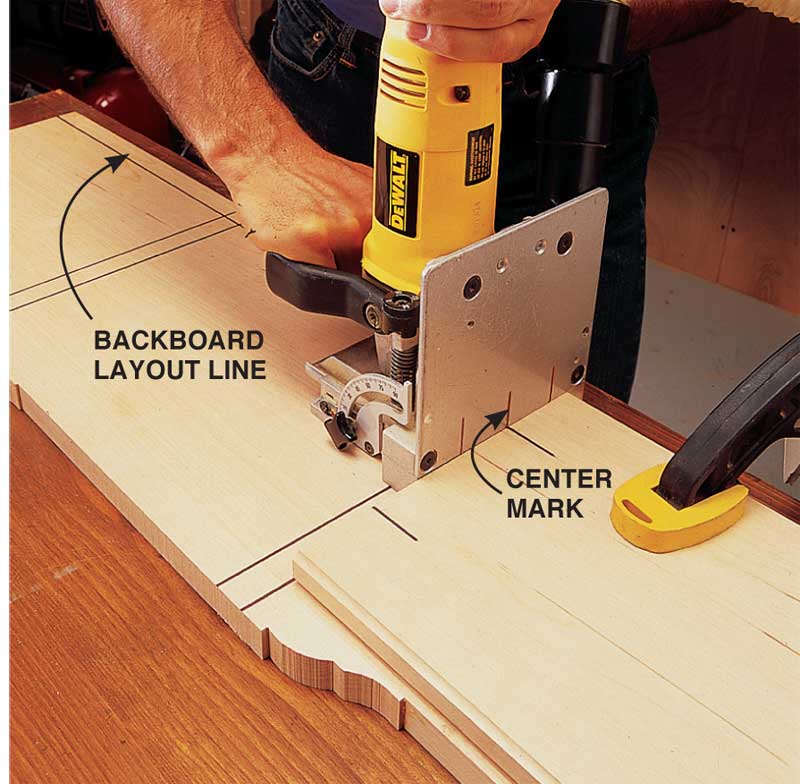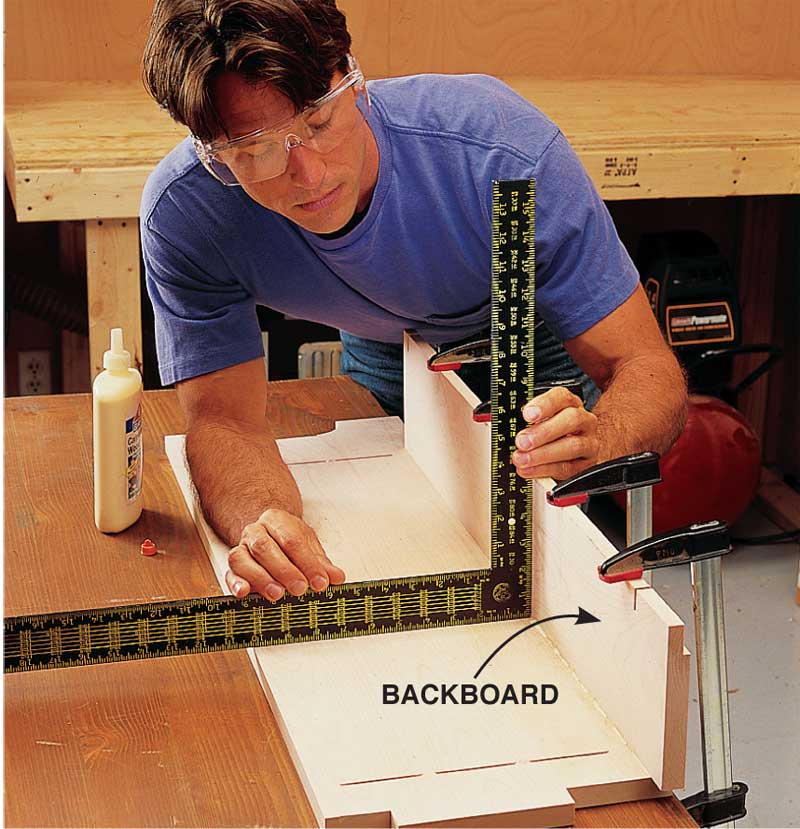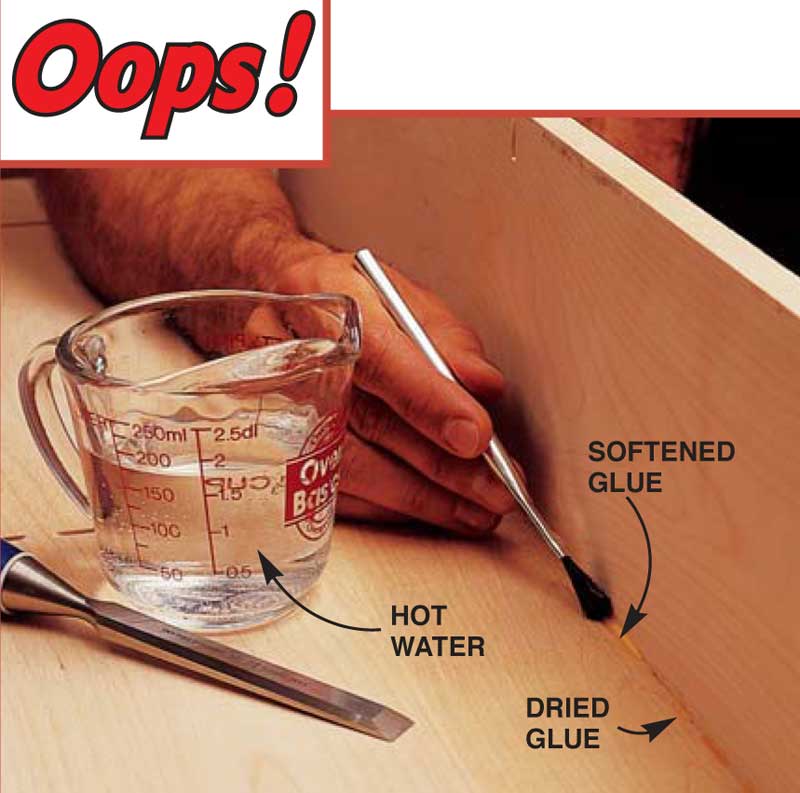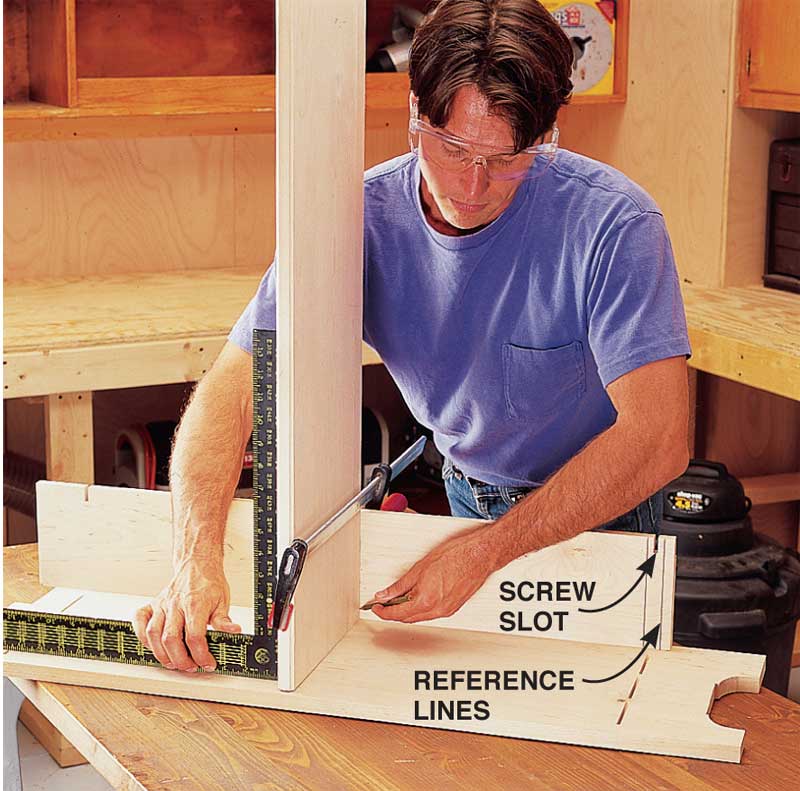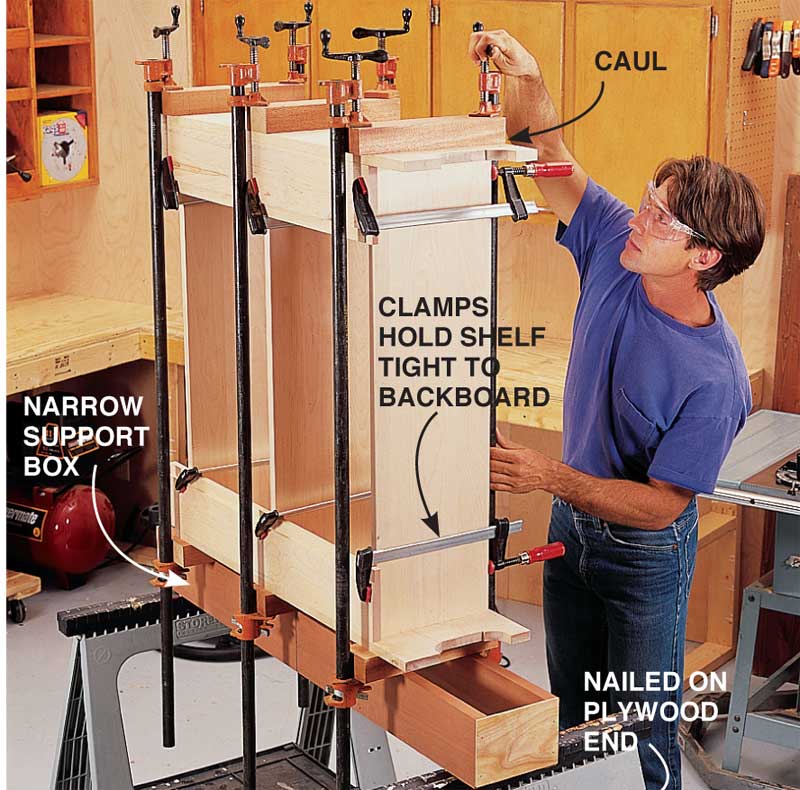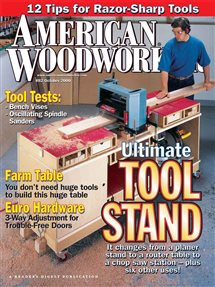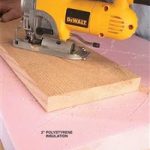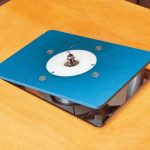We may receive a commission when you use our affiliate links. However, this does not impact our recommendations.
Two-Part Bookcase
Here’s a big bookcase that you can build in a small shop.
By Tom Caspar
Building a tall bookcase can stretch the limits of a small shop.We all know that big boards can be a bear to handle and glue up, so I’ve taken an old Scandinavian design and sliced it up into bite-size pieces.My solution is to break the bookcase into two interlocking sections that require only short and narrow stuff.Not to mention, that’s the only way I could get it out of my shop and up the basement stairs!
Biscuits join the shelves and sides. It’s a snap to put together wide boards at right angles with a plate joiner. But biscuits alone aren’t enough to make a stiff case, so I’ve added backboards that lock the whole bookcase into a rigid unit.
Materials and Tools
Rather than splurge on the best quality lumber simply to make shelves, you can save money on this project by using a lower grade of hardwood, No. 1 Common.You’ll find many good boards that are too short or narrow to make the best grade but are perfect for this bookcase. I used No.1 Common birch because it’s inexpensive (about $1.75 per bd. ft.), a light color (the case looks less massive) and stiff enough to support heavy books. You’ll need about 75 bd. ft. for a total cost of $130.
As an alternative you can use 3/4-in.-thick boards from a home center. Pick straight ones,glue them together and plane them to 5/8 in. I built a prototype bookcase this way and it worked just fine.To tell the truth, I preferred its slim look to one made of thicker wood.However, I found that 5/8-in. thick shelves bend under a lot of weight, so they wouldn’t be suitable for a set of encyclopedias.
You’ll need the three basic machines for processing solid wood to make this bookcase from rough lumber: a tablesaw, a jointer and a planer. (If you build with preplaned, 3/4-in.boards that have one straight edge,you can get by without a jointer.) A crosscut sled for your tablesaw isn’t required but it sure makes life easier. In addition, you’ll need a router,plate joiner, bandsaw or jigsaw, an accurate framing square and eight pipe clamps to hold the case together during glue up.
Any white or yellow glue works fine for the biscuit joints, because both glues contain the water needed to swell the biscuits.Use a special yellow glue with a long open time (see Sources, below) if you’re going to glue up the cases by yourself and don’t like working like a speed demon!
Preparing Rough Lumber
For the sides and backboards, select boards that don’t have a pronounced twist.Twisted wood isn’t worth the hassle. Rough cut your boards 1 in. over final length and 1/4 in. over final width.Set your jointer to remove 1/32 in.Run one face over the jointer only a couple of times. It’s OK if this doesn’t clean up the whole board.
Run the other face of the boards through a portable planer until most of the rough spots are gone and the boards are all about 7/8-in. thick.Don’t sweat it if they end up a bit thinner. Then joint one edge, rip the boards 1/32-in. over final width and joint the second edge.Pay attention to boards B and F— they’ve got to be exactly the same width. Square one end and trim the boards to exact length using a crosscut sled and a stopper arm (Photo 1).
Gluing the Sides
The upper and lower sides are composed of three boards that form a tongue and notch (Fig.F). There’s no trick to getting the sides to nest together perfectly. It’s simply a matter of being careful at glue up.
Start with the upper sides. Lay out the ogee curves on boards C and the cutouts on the top end of boards B (Figs. C and D). Cut out the curves on the bandsaw (Photo 2).
Dry clamp boards A, B and C together. Boards A and B are flush at the top.Boards A and C are flush at the bottom. Check both ends with a straightedge, then draw an alignment mark across all three boards (Photo 3).
Glue the upper sides together. Getting a perfect alignment end-to-end drove me nuts until I adopted the method of rubbing the boards together first, before clamping. Glue the lower sides the same way.Here all three boards are flush at the bottom.
Milling the Sides and Shelves
Plane both faces of the sides and backboards so they’re 3/4-in. thick (Photo 4). Congratulations if you’ve removed all the low spots, but don’t hang your head if you haven’t. You can plane all the boards thinner, down to 5/8 in., if that’s what it takes. Remove all the mill marks by sanding with 100- and 120- grit paper.
Here’s how to use the crosscut sled to trim the top and lower sides until they mate: First, saw off 1/4 in. from the bottom of both upper sides. This guarantees the bottoms are square and straight, leaving a 1-in.-deep notch. Then trim the tongues of the lower sides until they fit the notches. Because the middle boards (B and F) are exactly the same width, everything should fit tight as a glove.
Finish the lower sides by sawing the cutout at the bottom (Fig.E). It’s easier to use a jigsaw than be a hero and try to balance the board on the small table of a bandsaw. Make a pattern of your baseboard molding and cut out the back corner of the side so it will fit tight up against the wall.
Lay out the positions of the shelves on both the upper and lower sides (Fig.B). The shelves will be set in from the back of the sides by the thickness of the backboards.Draw this backboard layout line on the sides, too (Photo 6).
Glue up the shelves, thickness and sand them,then rout the molding on their front edges (Fig.D). Trim them to length with the crosscut sled.Finally, lay out center marks for the biscuits on the bottom faces. Now for the easy joinery.Cut biscuit slots in the sides and shelves at the same time (Photos 5 and 6). Use a framing square to make sure the shelves are clamped in the right place.
Fitting the Backboards
If it weren’t for the backboards, this bookcase wouldn’t last a week. These hard-working boards help lock the upper and lower sections together,but more importantly they stiffen the case (Figs. F and G). Cut the backboards to length,place them in position on the case sides and lay out the slots for the screws (Fig. G). Cut the slots on the tablesaw. Stand the backboards on edge against a miter gauge and make two overlapping cuts with a standard saw blade. Then cut the dadoes for the screwheads.
Cut biscuit slots to join the backboards and case sides. These biscuits align the backboard flush with the side, but do not add strength. Glue the backboards to the sides (Photo 7).
Final Assembly
The backboards also help you square up the whole bookcase when you glue the sides and shelves together. Thank goodness! You can get into lots of trouble by gluing things out of square,but this system is slick. Dry clamp each shelf in place with the biscuits loose in the slots and mark the shelf ’s position on the backboard (Photo 8). Make the pencil lines very light because you won’t be able to get into the corners with an eraser after the glue up. That’s the one downside of this easy method.
Take your time and walk through a dry run of the glue up before you attempt the real thing (Photo 9). Here’s the best way to do the glue up, alone,without going crazy: Support one side with a narrow (7-in.),wooden box that leaves room for the clamp heads. Insert one shelf at a time,align it with the reference lines on the backboard and clamp it in place. Once all the shelves are upright,place the other case side on the ends of the shelves, clamp the shelves tight to the backboard and finally add the pipe clamps.
Finishing and Installation
After gluing both cases, sand them with 150-grit paper. Avoid dyeing or staining birch,because it has a tendency to unevenly soak up color and become blotchy. Even an oil finish can look bad, so stick with shellac,brushed-on varnish or lacquer.
This tall bookcase stands quite well on its own,but for safety, fasten it to the wall through the backboards.Then there’ll be no chance for it to tip if a pet or rambunctious kid tries to climb the shelves!
Cutting List
Fig. A: Biscuit Placement
#20 biscuits are plenty strong to hold a shelf’s weight. They won’t shear off under a load because the grain of a biscuit runs
diagonally.
Fig. B: Exploded View of Tall Bookcase
Safety Note: Anchor this bookcase to the wall with screws through the backboards so it can’t accidentally tip over
Fig. C: Detail of Top Cutout
It’s easier to cut this with a jigsaw than a bandsaw because it’s hard to balance the board on a bandsaw’s table.
Fig. D: Details of Ogee Curve and Shelf Molding
This is a 50-percent reduction. Make a copy, double its size on a photocopy machine, paste it onto an index card and cut it out.
Fig. E: Detail of Bottom Cutout
Scribe the back of your bookcase to fit around your baseboard molding.The back of the bookcase should fit tight against the wall so the bookcase can be firmly anchored.
Fig. F: Connection Between Top and Bottom
The top half of the bookcase fits snugly onto the bottom half.The lower backboards (H) prevent the top half from shifting side-to-side, and the notched sides lock in the top, front-to-back.
Fig. G: Detail of Shelf Slots
Screwing the backboards to the shelves stiffens the bookcase, but an allowance must be made for the backboards to shrink and swell in width with the seasons.That’s why the screw passes through a slot rather than a hole.The backboard is dadoed so the head of the screw doesn’t stick out.
Click any image to view a larger version.
Side view
1. Trim long and wide boards on your tablesaw with a crosscut sled. A sled is easier to use and more accurate than a standard miter gauge. Clamp a hooked stick onto the fence to act as a stopper arm.This ensures that all your boards come out the same length.
2. Rip the stepped board (C) on the bandsaw. A simple fence helps you make a straight cut. Stop the cut at the top of the ogee curve and withdraw the board. Remove the fence and cut out the ogee.
3. Glue the upper case sides from 1-in.-thick rough boards that are planed to 7/8-in. thick.This leaves some untouched low spots, but that’s OK. Align the outside boards so their bottoms are even.
4. Plane the glued up case sides until there are no low spots left. All the parts of this bookcase should be the same thickness, which can be anywhere from 3/4 in. to a minimum of 5/8 in.
5. Cut biscuit slots in the ends of the shelves. You can’t go wrong if you clamp each shelf in position, right above the double lines. Set the shelf in from the back edge by the thickness of one backboard.
6. Cut more biscuit slots in the case side. Stand the plate joiner up on end and butt it against the end of the shelf. Align the center mark on the bottom of the machine with the pencil mark on the bottom of the shelf.
7. Glue the backboard onto the case side.Make sure it’s square along the entire length. Check opposite each clamp as you tighten it down. Shift the head of the clamp in or out to change the angle of the backboard.
Nuts! We forgot to remove some squeezed-out glue before it dried!
Finish won’t stick to it, so the glue has to be removed before we can move on. Fortunately, yellow glue can be softened with hot water and scraped off with a sharp chisel days after it has dried. Hot water turns the clear glue back to its original yellow color, so it’s easy to see what must be removed.After scraping, wash the area with a rag dampened with hot water, let the wood dry and sand off the raised grain.
8. Mark the position of the shelves on the backboards with light pencil lines.These reference lines help you glue up the entire case square. Clamp each shelf in place, without glue, and adjust it until it’s square to the case side.
9. Glue the lower unit together with cauls and pipe c9. Glue tlamps.The thick cauls distribute clamping pressure over the entire width of the side. Use short clamps to pull the shelves tight against the backboards. Align the shelves with the reference lines.Then tighten the pipe clamps.
Source
Note: Product availability and prices are subject to change.
Garrett Wade, 800-221-2942, Special Slo-Set Glue, 62J04.01, 1 pt.
This story originally appeared in American Woodworker October 2000, issue #82.
Here are some supplies and tools we find essential in our everyday work around the shop. We may receive a commission from sales referred by our links; however, we have carefully selected these products for their usefulness and quality.



